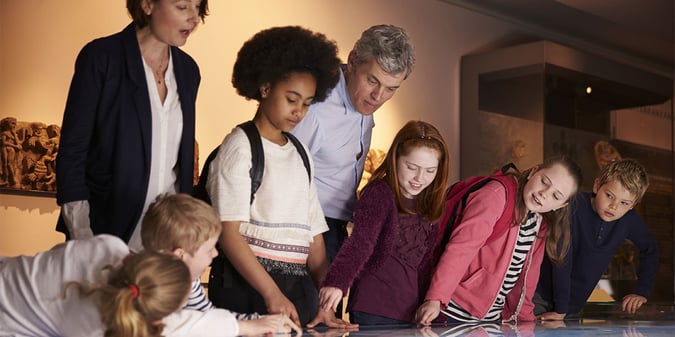
Political and social justice awareness across the United States, England, and Canada has increased markedly since the 2016 US elections. The exploration of empathy (its presence and deficit) has grown with that awareness and many articles, conferences, and workshops have begun to explore empathy within personal and professional spheres. Specifically, museums as cultivators of empathy is a topic that has steadily garnered attention and discussion, and shows no signs of slowing down.
In 2017, the American Alliance for Museum’s Center for the Future of Museums began its annual TrendWatch with an article on “Empathy”.
The article explores empathy, its relevance to current events, and addresses empathy’s current and future impact on the museum. A portion of the article examines the Empathy Museum, a museum founded in 2015 by Roman Krznaric that provides traveling exhibits.
When Krznaric was asked by iNews why he founded the museum, he explained:
I founded the Empathy Museum for a very specific reason: to create inspiring artworks that spark a public conversation about the power of empathy not just to transform personal life but to bridge social divides. In a world of growing inequalities and ‘us versus them’ xenophobia, and where we are increasingly trapped in narrow social media silos that reinforce our beliefs and ideas, there is more need than ever to escape the straitjacket of our own viewpoints and experiences. – Roman Krznaric
Kzrnaric’s statement speaks to the need for empathy with broad political and social justice implications, in addition to empathy’s ability to improve our personal lives. Indeed, the Empathy Museum’s missions states they aim to “not only transform our personal relationships, but also help tackle global challenges such as prejudice, conflict and inequality.” Through exhibits that focus on participatory arts, storytelling, and dialogue, the Empathy Museum meets its mandate to help visitors “look at the world through other people’s eyes.”
The Empathy Museum’s first traveling exhibit is titled “Empathy a Mile in my Shoes: Closing the Empathy Deficit.” The exhibit solicited and maintains more than 150 pairs of shoes and stories that explore “our shared humanity.” The traveling exhibit is shaped as a shoe box and provides visitors with a pair of shoes and a head set loaded with a story timed to about 15 minutes – the average time it might take someone to walk a mile. The “Empathy a Mile in My Shoes” exhibit provides a clear method for cultivating empathy by literally pairing a person’s recorded story with the act of walking a mile in their shoes. While not all attempts to engage with empathy can be so straightforward, it is a clear and excellent example to begin with.
Through the Empathy Museum and other examples across the globe, museums are slowly coming to consciousness with identity and the museum’s role as an empathy cultivator. By purposefully bringing in and sharing stories from a broad spectrum of humanity, a museum can use readily available exhibit space as a platform to offer these experiences for all to engage in. This is just one example of how museums can participate in empathy cultivation.
There are some museum professionals who may posit that museums dealing in empathy are merely chasing the latest “it” factor. Though empathy has been identified as a trend, it was selected as a trend due to the rising cognizance of the many who suffer due to humanity’s lack of empathy. As early as 2006, President Obama in a commencement address at Xavier University called out the empathy deficit:
There’s a lot of talk in this country about the federal deficit. But I think we should talk more about our empathy deficit—the ability to put ourselves in someone else’s shoes; to see the world through those who are different from us—the child who’s hungry, the laid-off steelworker, the immigrant woman cleaning your dorm room. - President Barack Obama, Xavier University Commencement Address, June 2006
If museums struggle with embracing the empathy trend and attempt to remain neutral by avoiding the existence of prejudice, conflict, and inequality; then perhaps an economic motivator will be more persuasive. In the Center for the Future of Museum’s TrendsWatch 2017 article on Empathy, the section “What This Means for Museums” states:
Museums have the opportunity to make the case that by cultivating empathy, they are increasing the emotional, educational, and economic success of their communities.
When museums tap into the outcomes of what it means to cultivate empathy, the results can be measured in economic benefits. Happier and engaged communities tend to stimulate better performance in the local economy. Engaged community members will give back more (to the museum and the community), both in dollars and in time. Cities that see positive education and economic trends affected by museums will naturally increase reciprocal support for the museum. And granting agencies and foundations (especially the local ones) will want to further facilitate the museum’s influence over the community’s emotional and educational success.
The truth is, when museums own their role as cultivators of empathy, everyone wins.


